Top 5 Restaurants, Per OpenTable — According to OpenTable customer reviews, the top 5 restaurants in Reston are PassionFish, Big Bowl, Vinifera Wine Bar & Bistro, Il Fornaio and Neyla Mediterranean Bistro. [Patch]
Tetra Misses Revenue Forecast — Local advocacy group Reston 20/20 faults the Reston Association for “horrible” revenue forecasting for the RA’s Tetra/Lake House. Programming revenue for Tetra is expected to be $82,535 for 2016 compared to the $175,000 budgeted in May. Total costs, however, were below budget. [Reston 20/20]
Arlington to Reston Commute — Redditors are weighing in on the feasibility of an Arlington-to-Reston reverse commute. The emerging consensus: mornings aren’t too bad but evenings are rough. [Reddit]
Photo courtesy @MrErrett
This is an op-ed submitted by Terry Maynard, co-chair of the Reston 2020 committee. It does not reflect the opinions of Reston Now.
The Transportation Service District (TSD) proposed for Reston’s station areas calls for homeowners there to subsidize developers as they build private roads on their property. With a projected balance in residential and non-residential development in the station areas, that means residents there would be paying between $55-$88 million in 2016 TSD tax dollars to developers to build roads on their properties over the next forty years depending on the initial TSD tax rate and if it remains constant (which it won’t).
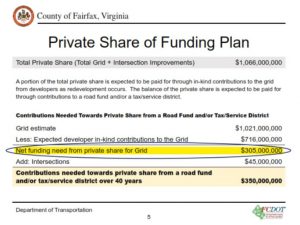 In an incomprehensible move, the Fairfax County Department of Transportation (FCDOT) has identified a phony $350 million “funding gap” for Reston road improvements requiring the creation of a TSD. As laid out in its September 30, 2016, presentation to station area developers, the so-called RNAG “stakeholders,” $305 million of the funding shortfall is to pay for the construction of their “grid of streets.” That’s 87% of the total TSD funds and some 30 percent of the grid’s $1 billion total cost.
In an incomprehensible move, the Fairfax County Department of Transportation (FCDOT) has identified a phony $350 million “funding gap” for Reston road improvements requiring the creation of a TSD. As laid out in its September 30, 2016, presentation to station area developers, the so-called RNAG “stakeholders,” $305 million of the funding shortfall is to pay for the construction of their “grid of streets.” That’s 87% of the total TSD funds and some 30 percent of the grid’s $1 billion total cost.
This “grid of streets” is the network of privately built roads on developer-owned property. They may be turned over to the state upon completion, but that is not at all clear. Station area residents–present and future–just get to pay developers to build them if this TSD proposal is approved. In contrast, the Tysons “grid of streets” is being paid for in its entirety by developers through financial contributions ($304 million) or in-kind contributions ($561 million); not a penny of Tysons TSD tax revenues.
This subsidy to the for-profit endeavors of developers of scores of millions of residential tax dollars suggests that the developers’ effort really won’t be that successful. However, our analysis of scope of profits for developers across the station areas over the next forty years, based on Boston Properties 2015 annual report, indicates they will have a net operating income averaging in excess of $1.1 billion per year in 2015 dollars. That’s $45 billion in profits over the next four decades. And yet the proposed tax suggests developers’ need residents’ financial help for some reason to build their roads themselves. We don’t think so.
The economic question above only accentuates the unfairness, even immorality, of forcing residents to to pay taxes to support commercial for-profit development. We don’t think the idea comes remotely close to passing a decency test, especially in light of developers’ anticipated profits. We recognize we are dealing with politics here, but it still leaves a strong stench.
As we have said here and elsewhere, there is no need for a new Reston road tax of any kind. This is especially so when a large chunk of it is intended to go into the pockets of developers. Moreover, the so-called “funding gap” is a mirage, even a fraud, created by the County to justify creating a new tax gimmick to afflict Restonians.
You can help stop this dangerous Reston road tax idea. First, Reston 20/20 has posted a petition on Change.org calling for a stop to passing this new tax that you can sign. Second, attend and participate in the RNAG community meeting on Nov. 7 at 7 p.m. in the South Lakes High School lecture hall. Third, let Supervisor Cathy Hudgins know about your concerns over the Reston TSD proposal.
Finally, attend and testify at the Board of Supervisor’s hearing on the matter, which has yet to be scheduled.
If we all work together, we have a chance to stop this unfair, unneeded County tax boondoggle.
Terry Maynard, Co-Chair
Reston 20/20 Committee
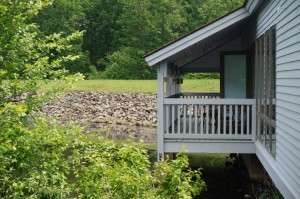 An analysis by advocacy group Reston 2020 says Reston Association will spend $1 million on the Lake House this year.
An analysis by advocacy group Reston 2020 says Reston Association will spend $1 million on the Lake House this year.
The Lake House — formerly Tetra — has been hit with financial difficulties since it was purchased for $2.6 million — about twice its assessed value — in 2015. RA showed a cost overrun of $430,000 last spring, due in part to a six-figure expected rentback from former owner/tenant Tetra that did not happen.
Exterior renovations to turn the building from offices to a community use building for afterschool care, meetings and events, also cost way more than anticipated.
RA CEO Cate Fulkerson will outline the Lake House financial outlook at tonight’s regular RA Board meeting. The board is also expected to pick an outside firm to conduct an independent audit of the Lake House cost overrun.
According to RA documents and Reston 2020’s analysis, RA will spend in 2016:
- $700,000 on renovation of the interior and exterior of the Tetra building.
- More than $107,000 on operating expenses, some $95,000 comprises employee-related expenses.
- Mortgage payments that will total nearly $184,000 this year.
RA numbers show it is now bringing in money as afterschool care began this month and it is booked for many events.
Total revenues were $3,677 in August, but are expected to jump to $31,000 this month and grow each month, according to RA’s spreadsheet.
But Reston 2020 compares the numbers with the original estimates in RA’s 2015 Tetra purchase fact sheet to show the ground it must make up, including:
- 2015 estimate that operating expenses would be $45,011 in 2016. RA’s latest report puts operating expenses at $107,303–more than double RA’s “fact sheet” projection.
- No program expenses because RA anticipated that the building would be leased back to Tetra developers through 2016. Now RA anticipates $107,303 in operating/programming expenses for this year.
- 2016 overhead expenses, including “existence cost” expenses and loan costs, were expected to reach $228,623 in the fact sheet. They are now projected to grow slightly to $247,072 this year.
Read more on Reston 2020’s blog.
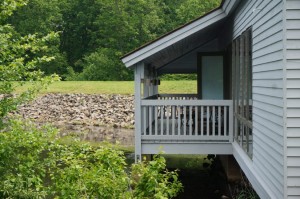 As Reston Association gets ready to hire a firm to conduct an independent audit of how the Lake House project incurred a $430,000 cost overrun, advocacy group Reston 2020 has an eight-point plan it wants the RA Board of Directors to keep in mind.
As Reston Association gets ready to hire a firm to conduct an independent audit of how the Lake House project incurred a $430,000 cost overrun, advocacy group Reston 2020 has an eight-point plan it wants the RA Board of Directors to keep in mind.
The purchase of the former Reston Visitors Center and office space for Tetra Partners commercial real estate was approved by voter referendum in May of 2015. RA told members renovation costs for the 33-year-old building would be about $259,000. That number quickly grew to more than $600,000 as RA made improvements to turn the office space into flexible community space.
While RA’s Board of Directors has moved money from its operating fund to cover the deficit, it has also voted to discover exactly what went wrong — but that independent investigation may cost an additional six figures (depending on the length of the audit and the fees charged by a professional firm).
Meanwhile, the Lake House is now open for business. Renovations are complete and RA is charging rental fees for community events, as well as getting ready for an after-school care program this fall. All of those things will earn revenue for the project, RA projections show.
But Reston 2020 says that is too little too late.
“The issues begin with disclosing the details of discussions that led to the secret deal with Tetra Properties to the near tripling of the property’s renovation costs in 2016,” Reston 2020 officials said in a statement. Read More
 Advocacy group Reston 2020 has taken a hard look at future funding for Reston transportation improvements and found the costs will be tens of millions of dollars more than expected.
Advocacy group Reston 2020 has taken a hard look at future funding for Reston transportation improvements and found the costs will be tens of millions of dollars more than expected.
A study group, the Reston Network Analysis Group, is currently examining how to implement an urban street grid in the areas around Reston’s transit centers. Grid-style streets will help traffic and pedestrian flow as Reston’s undergoes expected development in the next decades.
In a paper titled “Reston’s Coming Urban Area Transportation Network: An Early Look at the Cost of Streets and Transit in and around Reston’s Station Areas,” Reston 2020 Co-Chair Terry Maynard has found that the network may cost double the $2.6 billion officials estimate.
From the paper:
The overall cost for Reston’s urban transportation improvements will be nearly twice what has been presented to the RNAG over the next 40 years using conservative assumptions of future development and inflation. Developer stakeholders have millions of dollars to gain annually by shifting more of that large financial burden to the “public” rather than placing it upon themselves.
It is imperative that the RNAG, especially the community representatives, ensure that our community is protected from unwarranted and excessive ‘taxation’ for transportation improvements that will average $125 million per year and add several hundred dollars each year to residents’ property tax bills.
The road projects will be built with a combination of public funds, developer proffers and perhaps a special tax on transit-area businesses and residents.
“Reston households could see a property tax increase averaging about $340/year over the next 40 years depending on the scope of the ill-defined “public” contribution and the funding option selected,” says Maynard. “Overall, Reston residents are likely to contribute a half-billion dollars in taxes to the for-profit efforts of Reston’s station area developers if any of funding Options #3-#6 are selected, and in a worst case scenario, they may pay more than more than $1 billion dollars in taxes to finance needed urban transportation improvements.”
See the entire Reston 2020 analysis below.
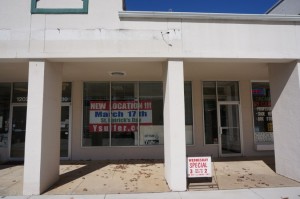 Advocacy group Reston 2020 is offering a suggestion on how the planned redevelopment at Tall Oaks Village Center could better preserve green space and add more retail to serve the neighborhood.
Advocacy group Reston 2020 is offering a suggestion on how the planned redevelopment at Tall Oaks Village Center could better preserve green space and add more retail to serve the neighborhood.
Tall Oaks Village Center is planned for redevelopment by new owner Jefferson Apartment Group (JAG). JAG is planning to make the center mostly residential, with 156 residential units (garden-style condos, townhouses and two-over-two townhouses) and up to 7,000 square foot of retail on the site of the nearly empty 70,000-square-foot village center at Wiehle Avenue and North Shore Drive.
JAG tweaked its design last spring after citizens said they were disappointed in the early plan for only about 3,000 square foot of retail. Read More
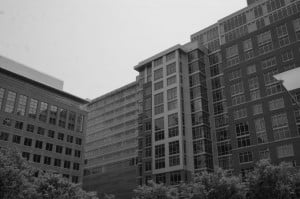 This is an op-ed by Reston 2020’s Terry Maynard. It does not represent the opinion of Reston Now.
This is an op-ed by Reston 2020’s Terry Maynard. It does not represent the opinion of Reston Now.
(Updated, 12:30 p.m. Friday) Correction: Maynard has reported the that area affected by the change in the size of the Transit Station areas, allowable square footage of development, and other related numbers late in his op-ed are actually about one-third of those reported. In particular, the expanded area and high densities would allow about 438 million square feet of total development, not 1.4 billion square feet as stated.
A few days ago, I wrote an op-ed published here on the County’s efforts to increase the allowed population density in Reston and double the permitted zoning density in Transit Station Areas (from FAR 2.5 to FAR 5.0, plus a 0.5 FAR bonus for affordable housing), including Reston’s three stations.
Aside from allowing major density increases here, these proposed changes affect other types of County “districts”, such Community Business Districts, Commercial Revitalization Districts, and Commercial Revitalization Areas elsewhere in the County. These include Baileys Crossroads, Seven Corners, McLean, Merrifield, Lake Anne (yes!), Annandale, Springfield, and most of the Richmond Highway area. And, of course, all the areas surrounding the County’s Metrorail stations. And we already have reliable commentary that developers intend to maximize density in at least one of these “districts” once the zoning law is changed.
All these areas would now be incorporated into the zoning code as either Planned Development Commercial Districts (PDCs) or Planned Residential Mixed-Use Districts (PRMs), the difference being the predominance of commercial or residential uses. The density caps may be approved if the County “is implementing the density/intensity and other recommendations of the comprehensive plan or any other design guidelines endorsed by the Board.” “Any other guidelines;” that’s a hole as large as a skyscraper.
The adding of these “districts” to the PDC or PRM categorizations and upping the allowable density is all part of the Board of Supervisors’ strategy to allow massive urbanization of Fairfax County over the next several decades. Not just the Reston you know, but the County you know would be completely different if market conditions permit.
In fact, early this year the Board approved a new County “Strategic Plan to Facilitate the Economic Success of Fairfax County” that calls for this urbanization of Fairfax County. The plan was developed by the County’s Economic Advisory Commission and its panel represented just about every County “sector” except residents, the people who pay more than half of the County’s taxes and elect its Board. As you might expect, however, the strategic plan cynically states that the County’s vision is “To protect and enrich the quality of life for the people, neighborhoods and diverse communities of Fairfax County….” But who needs them in preparing the plan? What value could they possibly add? Read More
 After Phase 2 of the Reston Master Plan was approved by the Fairfax County Board of Supervisors last week, Reston 2020 and the Reston Citizens Association have decided to part ways.
After Phase 2 of the Reston Master Plan was approved by the Fairfax County Board of Supervisors last week, Reston 2020 and the Reston Citizens Association have decided to part ways.
Reston 2020, which was formed by RCA members six years ago to advocate for citizens concerned about the Master Plan process and other development activities, says it will also suspend major activities for now.
RCA’s Connie Hartke says many groups have jumped from RCA into independent organizations. Among them: Reston Planning & Zoning, which is now under Hunter Mill Supervisor Cathy Hudgins’ office, and Sustainable Reston.
“The RCA Board of Directors thanks the Reston 2020 Committee for the invaluable contributions and their tireless efforts on behalf of Reston,” she said. “The RCA Board wishes the Reston 2020 Committee continued success and look forward to collaborating with it on issues of joint concern to ensure Reston continues to remain a premier community in the Washington, DC Metro area where people wish to live, work and play. “
In addition to focusing on Master Plan issues, Reston 2020 offered analysis, white papers and testimony on, among others, the Dulles Toll Road, Metro’s Silver Line, Fairfax County Public Libraries, the new Reston Community Center, the recent Tetra purchase by Reston Association and Reston development in general.
Reston 2020 said the decision to temporarily suspend activities “is driven by the fact that Reston 2020’s core mission has been completed and those few committee members who have worked extensively on the Reston Master Plan and other Reston 2020 issues are exhausted. “
“This does not mean closing down the committee,” says Reston 2020. “Reston 2020 will accept and review ideas on community development topics and issues Restonians think it ought to pursue, proceeding on those that have a broad community impact.”
 This is an op-ed by Reston 2020’s Terry Maynard. It does not reflect the opinion of Reston Now.
This is an op-ed by Reston 2020’s Terry Maynard. It does not reflect the opinion of Reston Now.
RestonNow’s article yesterday on the upcoming Board of Supervisors hearing of Phase 2 of the Reston Master Plan provides an excellent overview of the key provisions of new Plan for “suburban” Reston, the community that all of us live in except those in Town Center and the new high-rise residences near the Sheraton Reston.
Speaking on behalf of the Reston 2020 Committee, we believe the draft plan amendment generally serves the existing Reston residential community well, but with some important exceptions we have detailed to the County staff on at least two occasions. (Please see our initial ideas for Phase 2, comments on draft Version 2, and specific comments on the Reston Land Use Map.)
It may help to highlight what we believe are the more substantial shortcomings regarding the village centers and open space in this Phase 2 of the draft plan and the changes made by the Planning Commission so Restonians have the opportunity to reach out to the Board of Supervisors at the hearing today (Tuesday, June 2, 4 p.m., Fairfax County Government Center) or to Hunter Mill Supervisor Cathy Hudgins directly.
We urge the Board of Supervisors, Supervisor Hudgins in particular, to listen to and address the concerns of Reston organizations and residents at this important hearing and in other communications concerning Reston’s existing neighborhoods.
Village Centers: In our view, the most significant shortcomings of the draft plan appear in the section dealing with village centers.
Maybe the biggest one is that the draft plan puts no limits on the density of redevelopment in these critical elements of the Reston community. The plan’s failure to limit density (we recommended a density of FAR 1.0, four times the current limit) could result in extremely dense commercial, office, or residential development (or all of the above) in the village centers that would be totally inappropriate for a neighborhood-serving center.
The absence of a reasonable density restriction could easily lead to the situation we are about to see in Town Center North, where plans to build a 23-story office building beyond the high-density, half-mile transit station area (TSA) — and twice as tall as the adjoining new Spectrum Center — were approved by the Board because there was no density restriction. Read More
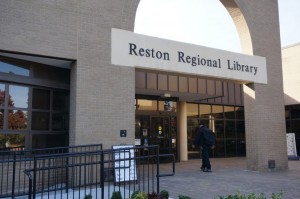 Now that the new Fairfax County North County Government Center is getting ready to open on Cameron Glen Drive, the county is taking initial steps to start the process for a new Reston Regional Library as part of the makeover of Town Center North.
Now that the new Fairfax County North County Government Center is getting ready to open on Cameron Glen Drive, the county is taking initial steps to start the process for a new Reston Regional Library as part of the makeover of Town Center North.
Tentative plans for a new library in Reston have been in place since 2012, when voters approved a $25 million library bond, with $10 million of it allocated for a new Reston Regional Library.
The remaining money will fund renovations at Pohick Regional, John Marshall Community and Tysons Pimmit Regional libraries.
A new library plan is set to proceed despite a tumultuous last few years for the county library system. Critics have pointed out that the Fairfax system spends less per capita than any other surrounding jurisdiction; has been caught discarding books rather than recirculating them; slashed its budget; and nearly went ahead with a “beta plan” at Reston Regional and Burke libraries that would have cut staff and resources.
In the County Executive’s FY 2016 Advertised Budget, announced on Tuesday, Fairfax County Public Libraries will receive $27,612,745 — about 7.7 percent less than in 2015.
A new plan is still in the works, though. Reston Citizens Association group Reston 2020 recently obtained the timeline for the process. Some of the details:
The new library was included in the Comprehensive Plan Amendment that was approved by the Fairfax County Board of Supervisors in 2014.
The county is expected to rebuild the library and the Embry Rucker Community Shelter on its current 6-acre site on Bowman Towne Drive, called “Blocks 7 and 8” in county documents.
The county is expected to issue a Request for Proposals from companies interested in developing the new library. The RFP will go through June 2015.
The county is expected to select a developer in September 2015.
Proposals will be for the library and shelter, as well as “additional county uses,” according to the documents.
The RFP will also determine “highest and best use of the land,” in keeping with the Reston Master Plan and construction costs, among other details.
The project will then go through a rezoning, as well as approval process by the county planning commission and board of supervisors.
Last week, a land deal was announced that will allow the Fairfax County Park Authority build a 90,000-square-foot recreation facility at Reston Town Center North, pending public hearings, a park authority board vote and procurance of millions of dollars for construction.
Part of the deal also includes a 2.6-acre Town Greene to be built on the same block as the new North County Government Center on Fountain Drive.
The Reston comprehensive plan amendment says the Town Center North area is “planned for up to a .90 FAR for non-residential uses, which should include office, public, institutional, medical care, hotel, and retail uses, and a minimum of 1,000 residential units. The public uses may include public safety uses, libraries, shelters, schools, a recreation center, government offices, a performing arts center, and institutions of higher education.”
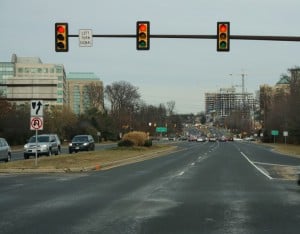 Development-watcher group Reston 2020 says it is concerned about planned improvements for connectivity in Reston — at the expense of motorists.
Development-watcher group Reston 2020 says it is concerned about planned improvements for connectivity in Reston — at the expense of motorists.
In a letter to Richard Lambert of Fairfax County’s Department of Planning and Zoning, Reston 2020 says that autos will still rule in Reston. So whether we are transit-oriented in the future, we still need to accommodate more cars on the road.
The county should start by ensuring that developer proffers should help pay for widening of Reston Parkway to ease future traffic flow, Reston 2020 says.
The lengthy letter comes in response to the Reston Master Plan Phase II “Strawman Draft” released by the county a few weeks ago. The county is taking feedback from citizens and citizen groups as it organized the comprehensive plan for Reston’s village centers and neighborhoods.
Says Reston 2020:
We are enthusiastic about improved connectivity in Reston, especially for pedestrians and bicyclists, but not at the expense of vehicular traffic.
Automobiles will remain the predominant mode of transportation in Reston, especially in its suburban areas, and even the plans for expanded bus service will mean the greater use of Reston’s roadways.
Moreover, the planned addition of some 50,000 people to the TSAs [transit station areas] and the potential addition of several thousand new residents to the village centers means there will be more vehicular traffic.
We would put special emphasis on key north-south roadways that, in our view, received short shrift in the Phase 1 effort. Much of the traffic generated in Reston, including some commuting traffic, involves people moving from the north to south or vice versa suburban (Phase 2) areas of our community.
In particular, as part of the proffer process,we would ask again that Reston Parkway (including the corridor overpass) be expanded to three through lanes all the way north to Baron Cameron Avenue and south to Glade, about one-mile from the Town Center Metro station in each direction, to facilitate the movement of traffic to, from, and through the Town Center TSA.
The standing County approvals for the 23-story Town Center Office Building and the 10-12-story mixed-use Spectrum Center, both outside the half-mile walkability circle, highlight the relatively urgent need for the road’s expansion north of the corridor.
The choking of suburban traffic will only hurt the development of both the TSA and suburban Reston. In addition to ensuring that connectivity does not come at the expense of vehicular traffic, we have proposed stronger language to help ensure that any traffic impacts caused by redevelopment are mitigated by developers.
The plan must at least sustain the existing level of service (LOS) for Restoniansin the Phase 2 study area, including accommodations for TSA residents to drive in the suburban areas of Reston to a school, park, preferred supermarket or other retail outlet, and even their place of work beyond suburban Reston.
See the entire letter and markup of the Master Plan draft text on Reston 2020’s website.
Photo: Traffic on Reston Parkway/File photo
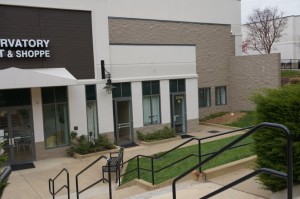 Advocacy group Reston 2020 says Reston village centers should be be planned in a compact manner to prevent creeping urbanism where it does not need to be.
Advocacy group Reston 2020 says Reston village centers should be be planned in a compact manner to prevent creeping urbanism where it does not need to be.
Fairfax County planners have begun Phase 2 of the process to revise the Reston Master Plan for the areas around Reston’s Village Centers. Phase 1, which looked at the areas surrounding the future transit stations, was completed earlier this year.
In a paper titled “Ideas for Development of the Phase 2 Reston Master Plan,” Reston 2020 co chair Terry Maynard writes that “the village centers are important community gathering spaces that include a mix of locally serving retail, a residential component, and employment opportunities.”
“Redevelopment to augment and enhance the village centers will be pedestrian-oriented, should include a plaza as a central element and provide adequate transition to surrounding neighborhoods. Convenient public transportation options should link the village centers and the transit stations,” the paper states.
The group says that only the core of the village center areas — the Central Mixed Use Areas (CMUA) — should be allowed to add low-rise dwelling units, above ground-level retail and other business. The new development should also taper withareas of trees and shrubbery, as well as ave no surface parking.
Reston 2020 also suggests that the convenience centers (smaller retail strips) be planned and zoned, “as built,” as should residential neighborhoods.
Fairfax County officials say the the current comprehensive plan, last updated in 1989, requires revision because Reston no longer has a master developer to update the plan for Reston; the plan for Reston has outdated elements; and with population expected to grow with the arrival of Metro this summer, Reston is evolving as a community.
Hunter Mill Supervisor Cathy Hudgins said neighborhoods will largely remain untouched. The general plan is to preserve existing development but institute some guidelines in case of future development opportunities.
The county is currently accepting feedback from citizens about Phase 2. A series of community meetings will be held this fall. The county hopes to have a plan framework early next year.
Photo: Hunters Woods Village Center/file photo
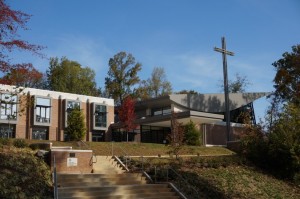 This Saturday, June 7, 8:30-10:30 a.m., Fairfax County will hold an Open House at the United Christian Parish church (11508 North Shore Drive) to explain the goals and process for Phase 2 of the Reston Master Plan (RMP).
This Saturday, June 7, 8:30-10:30 a.m., Fairfax County will hold an Open House at the United Christian Parish church (11508 North Shore Drive) to explain the goals and process for Phase 2 of the Reston Master Plan (RMP).
Phase 2 covers suburban Reston, virtually all of it covered by the Reston Association Deed. It will address the future of our neighborhoods, our village centers (excluding Lake Anne), and other selected Reston areas (convenience centers, the business area just north of Baron Cameron Avenue, and more) not covered in the just-completed Phase 1, which replanned the Metrorail station areas.
We know little about what the county will do, even those of us who have been deeply involved in the Phase 1 process. The County’s new process — “Fast Forward” — is designed to streamline updating of the County’s Comprehensive Plan, including Reston’s Master Plan.
In the version that is being used for RMP Phase 2, there will be no task force, charrette, or other efforts to join the community’s stakeholders — residences, businesses, landowners, and more — in a discussion about what the community should become.
Instead, we have been asked to submit comments–but only on specific development proposals, per County staff–before July 11 with only the information provided at the Open House this Saturday. It is very important for Reston’s residents to turn out in force at this walk-through event–where County staff will discuss the plan’s goals and process.
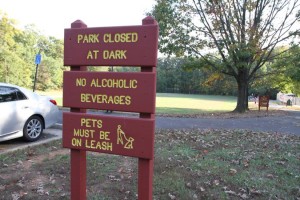 “Great Parks, Great Communities” is the clichéd theme of the Fairfax County Park Authority. And the theme may be true, but the Park Authority is promising — a promise it may well not fulfill — Tysons and Reston urban areas among the most poorly parked-served areas among the top cities in the country.
“Great Parks, Great Communities” is the clichéd theme of the Fairfax County Park Authority. And the theme may be true, but the Park Authority is promising — a promise it may well not fulfill — Tysons and Reston urban areas among the most poorly parked-served areas among the top cities in the country.
It raises the question, will poor parks mean poor communities?
As Reston Now suggests in its April 29 article, county park availability standards for the newly urbanizing areas of the Dulles Corridor are less than half of the county-wide “suburban” standard — and the Park Authority plans to put fewer parks in Reston’s station areas than in Tysons because we have parks and facilities elsewhere.
Here’s where we are in the arithmetic of public parks. The county standards described in Tysons’ and Reston’s plans shoot for providing about 1.7 acres of park per 1,000 residents. That’s about 154 acres of parks in Tysons and 95 acres in Reston — if fulfilled.
Now let’s see how that stacks up. A national non-profit, the Trust for Public Lands, tracks park availability annually for the 100 largest cities in the country. When Fairfax County’s urban park standard is included in the ranking of acreage per 1,000 residents, both Tysons and Reston rank in the bottom 5 percent of all the cities.
If Tysons and Reston achieve the county urban goal, they would bracket New York City’s Manhattan Borough near the bottom of the list. Yet Manhattan has two and one-half times the density planned for Tysons and more than three times the density planned for Reston.
Moreover, despite having some of the most expensive real estate in the country, Manhattan has been able to set aside 18.3 percent of its land for parks. That’s more than 10 times the share planned for Tysons (1.4 percent) and more than three times the goal for Reston (5.6 percent).
And the county has no intent to meet its own standard for Reston because, as the Reston Comprehensive Plan says, “Need generated in the TSAs should primarily be met through the integration of urban parks, recreation, and cultural facilities within the mixed use developments of the TSAs. To supplement these parks and facilities, elements of the larger Reston area’s robust park and recreation system (outside of the TSAs) may be able to be improved to help meet the needs of future residents and employees.”
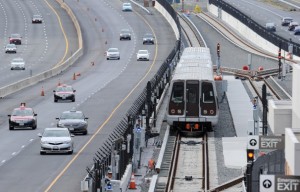 When the Metropolitan Washington Airports Authority and Metro came to an agreement on Silver Line turnover on Thursday, it was hailed from Capitol Hill to Dulles Airport as a major step towards getting the rail extension open this summer.
When the Metropolitan Washington Airports Authority and Metro came to an agreement on Silver Line turnover on Thursday, it was hailed from Capitol Hill to Dulles Airport as a major step towards getting the rail extension open this summer.
But at what cost?
The project is already seven months behind schedule and will be missing a project manager since Pat Nowakowski announced last week he is leaving the job. It is also $150 million over budget.
And those are just the issues before one starts to look at the list featured in the agreement, which includes more than 50 items, some of them major system woes that need to be addressed before passengers can safely ride the line.
The Silver Line’s Phase 1 will run from East Falls Church to Reston’s Wiehle Avenue. Dulles Transit Partners, the contractor building the line, submitted for “substantial completion” on April 9, the same day $25,000-a-day penalties were slated to begin under the terms of the contract with MWAA.
The submission was actually a resubmission as DTP, a division of Bechtel, also filed on Feb. 7 — and MWAA found issues of 7 of 12 areas in its review.
Those issues were supposed to be fixed before MWAA could accept the project to turn over to Metro. MWAA said Thursday it was accepting the project as substantially complete, even if dozens of punchlist items were, in fact, not complete.
Metro said if the agency waited until MWAA completed all the necessary work before taking custody of the project, passenger service probably wouldn’t begin until late 2014 — about a year behind schedule.
But there is still no opening day in site and fixes ranging from “ponding in stations” to automatic train control glitches to “waterproofing at Wiehle Station are not exactly quick cosmetic fixes.
“The deal MWAA struck with WMATA yesterday makes a farce of the concept of ‘substantial completion,’ ” says Terry Maynard, co-chair of Reston Citizens Association’s Reston 2020 Committee. “Instead of verifying and certifying that DTP has built the Silver Line to contract specifications before turning it over to WMATA for testing and training, MWAA is passing off a poorly and incompletely constructed rail line with a 50-item laundry list of work that needs to be done before WMATA may accept it. Some of that work is simple, but some of it will be difficult, expensive, and time consuming to complete.”
Maynard is concerned about what the cost to MWAA — and ultimately the taxpayer — will be to make the fixes. Under the terms of the agreement, MWAA must:
- Reimburse WMATA (Metro) for costs it has incurred in providing technical advisory services as a direct result of the line not being completed on Sept. 9, 2013.
- Cover Metro’s cost of having two employees, 24 hours a day, seven days a week, monitoring the Horton Remote Terminal Units (RTUs), which help run the crucial Automatic Train Control software. As mentioned in a $1.8 million contract MWAA awarded last week to a New York company, the current controls are below par and replacing and upgrading could take a year.
- MWAA will also pay Metro the costs of managing said contract with Alstom Signaling.
“The delays, repairs, and new construction requirements in the MWAA-WMATA deal will all cost money, probably tens of millions of dollars although no one has told the public what the cost will be,” said Maynard. “Worse, we don’t have any idea who will pay for all this. “
Maynard says if the costs are shared under the funding partners agreement among MWAA, Loudoun, and Fairfax counties, it means that Dulles Toll Road users will end up paying about two-thirds of the added cost.
“It makes no sense whatsoever that toll road users should pay for the failure of DTP to meet its contractual obligations or the failure of MWAA to make sure that it did.”
MWAA officials said last week about $23 million is available in its contingency fund.
Metro General Manager Richard Sarles said Thursday that Metro will likely take control of the line next month and that allowing MWAA to complete the items after that will help get the line open this summer.
Sen. Mark Warner (D), who met with MWAA officials this week, says both agencies need to get the project done correctly and quickly.
“I strongly encourage MWAA and WMATA to maintain a sense of urgency so that we will see the Silver Line up and running before the end of summer,” he said in a statement. Warner has been critical of the Silver Line’s delays for months.
“I urge everyone involved to pull together to get the remaining punch-list issues resolved quickly so we can move forward to the crucial safety testing. Too many travelers and taxpayers have waited too long for these final steps not to be resolved as quickly and efficiently as possible.”


